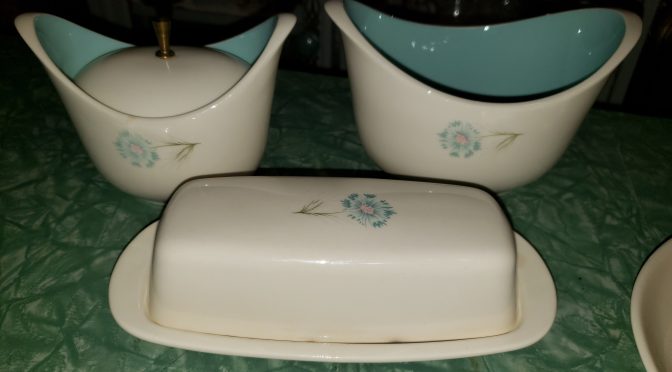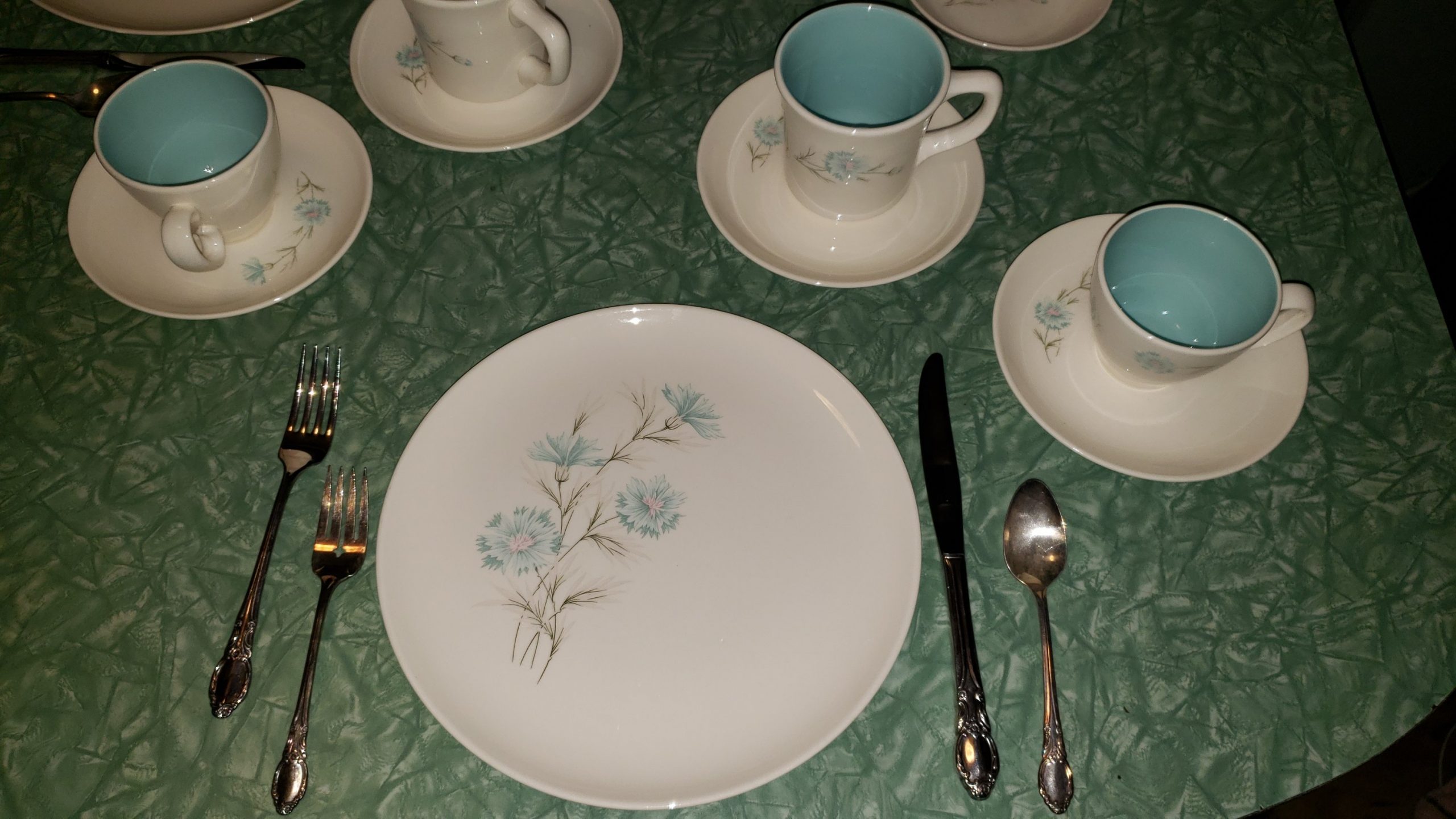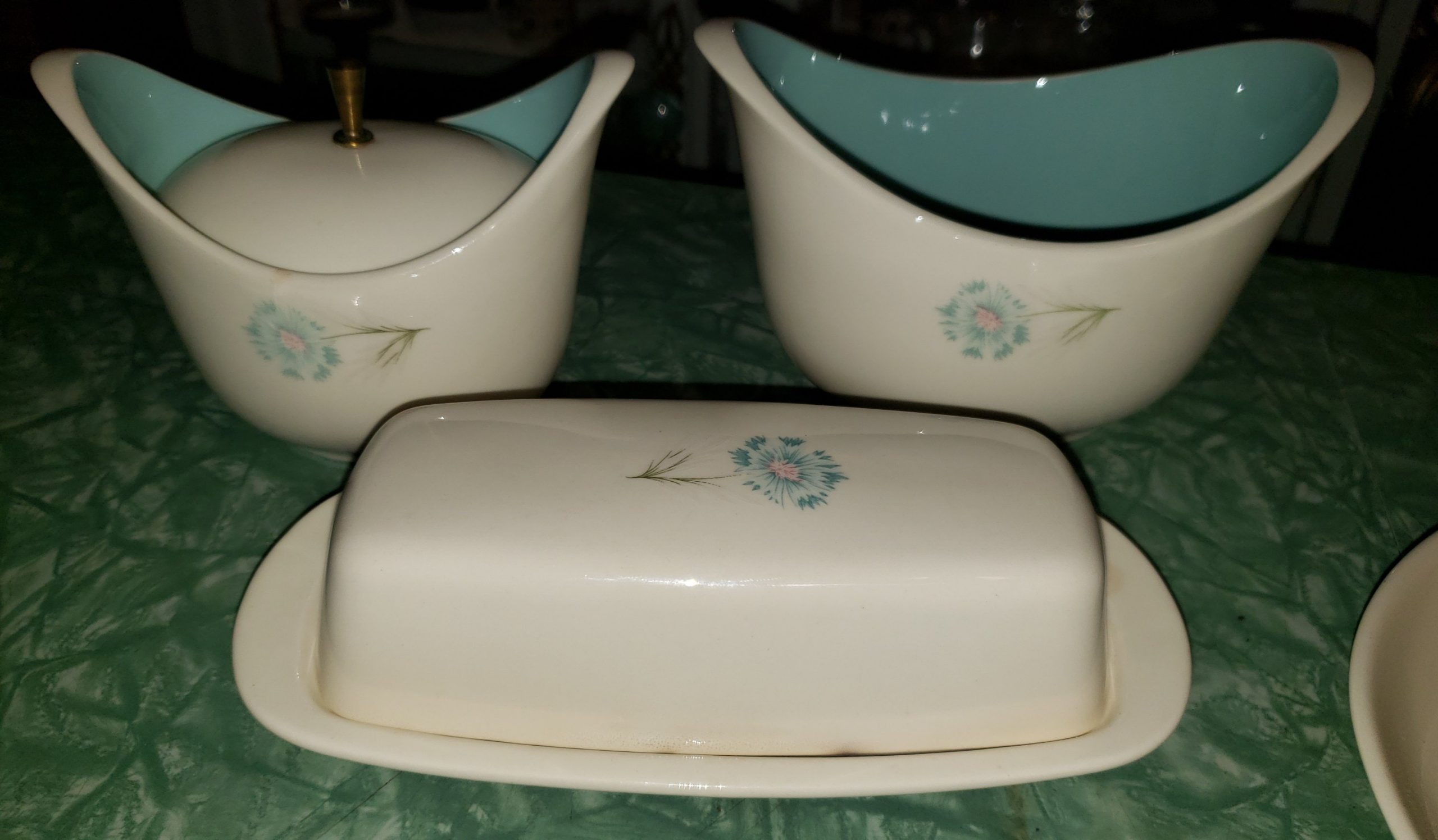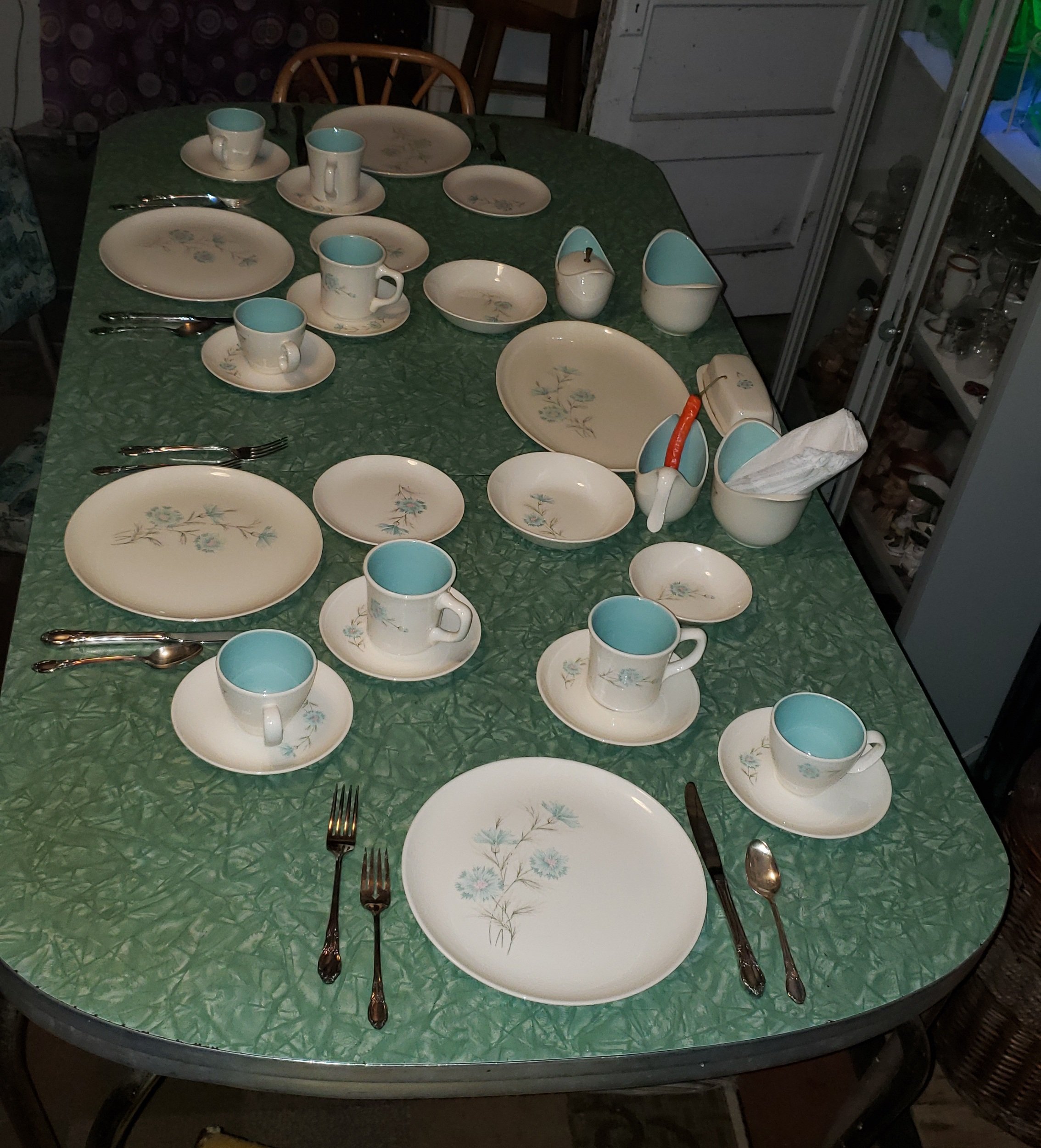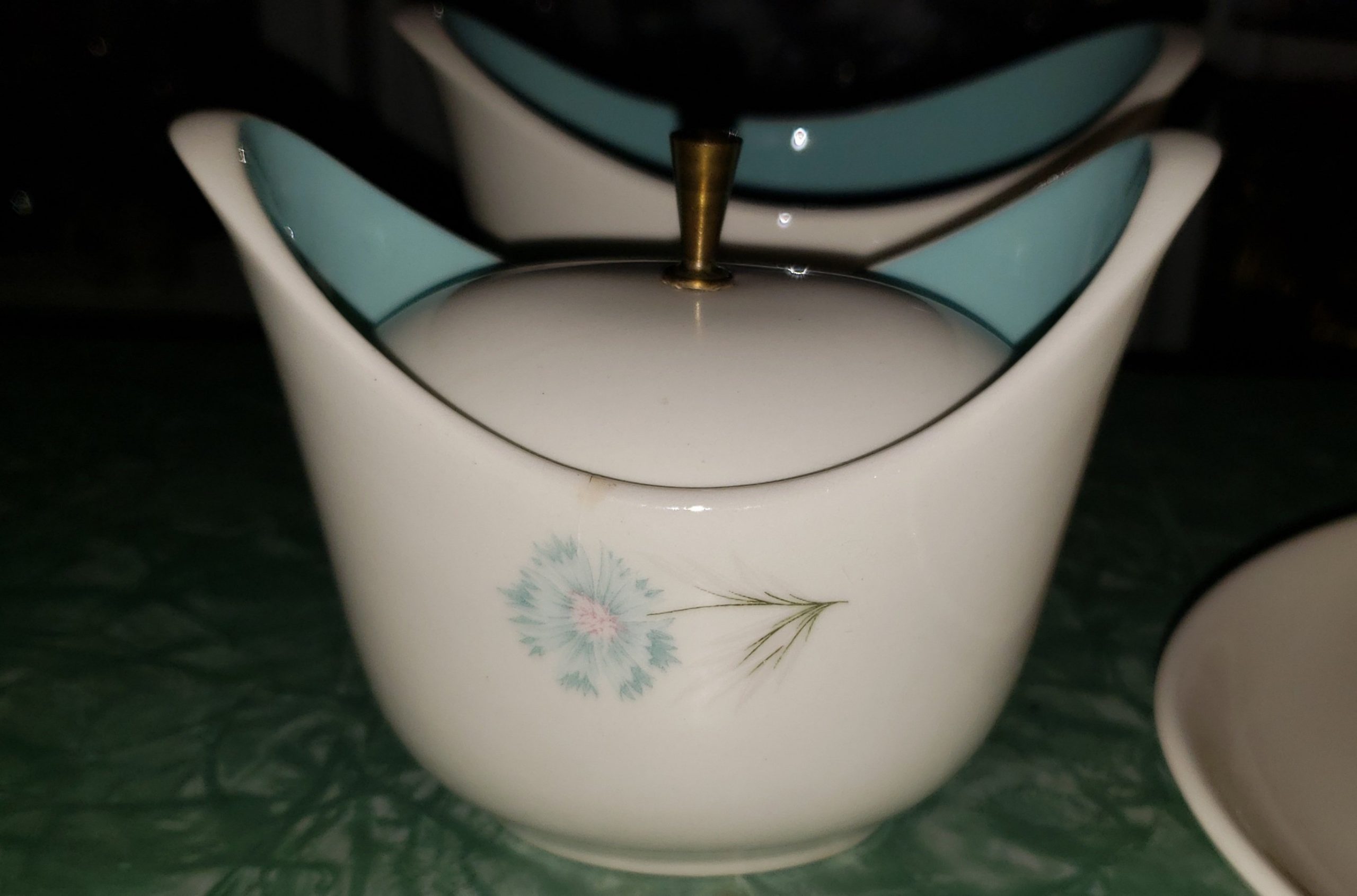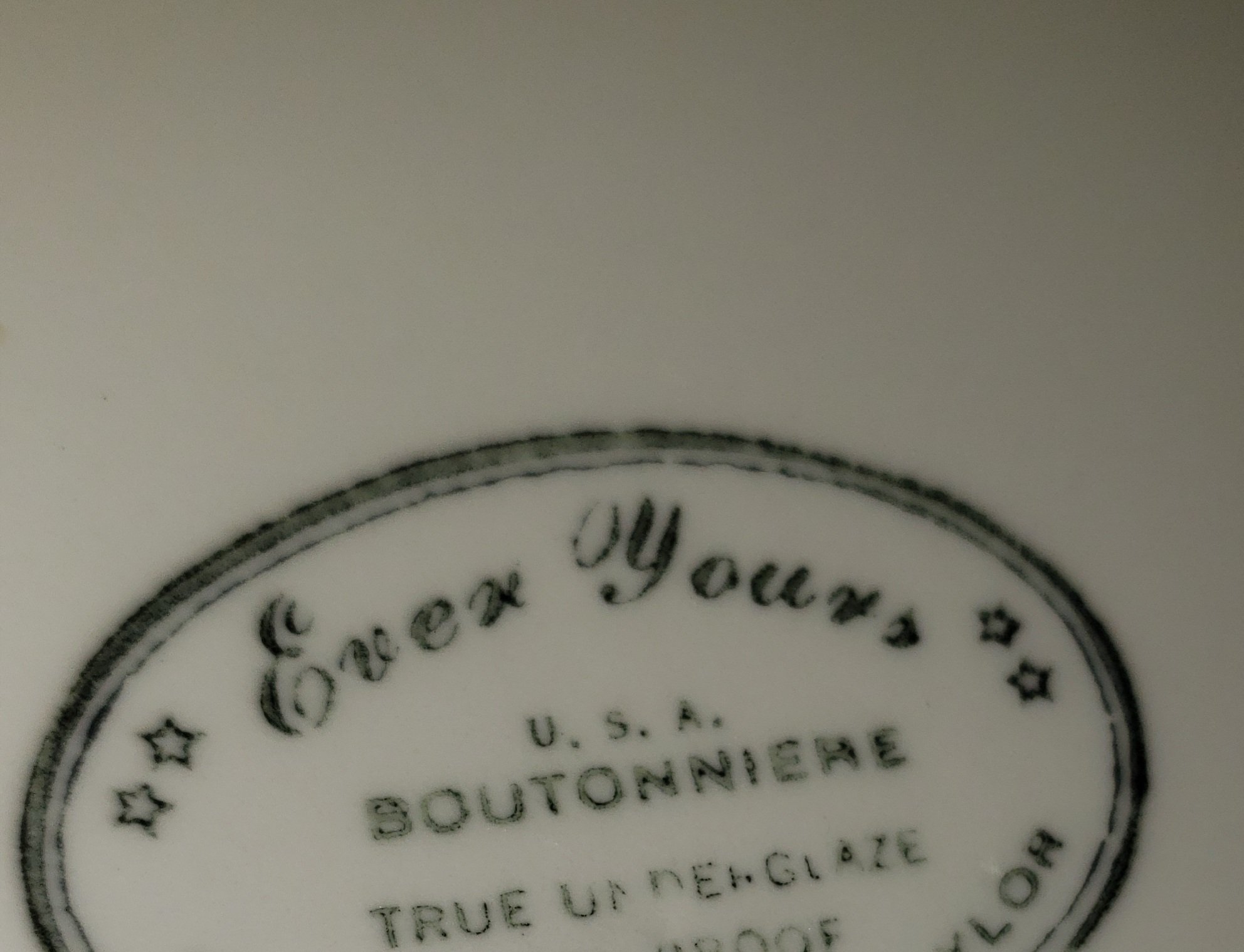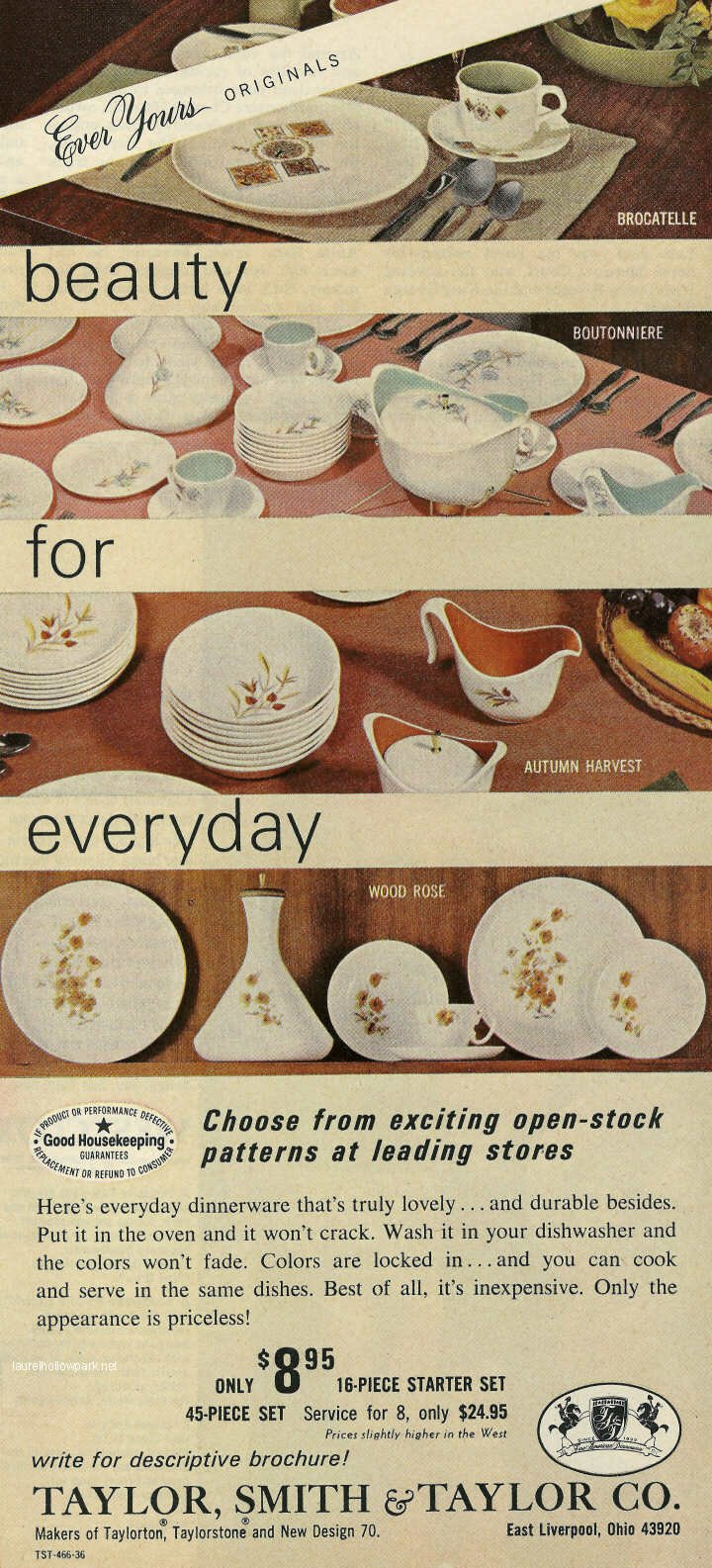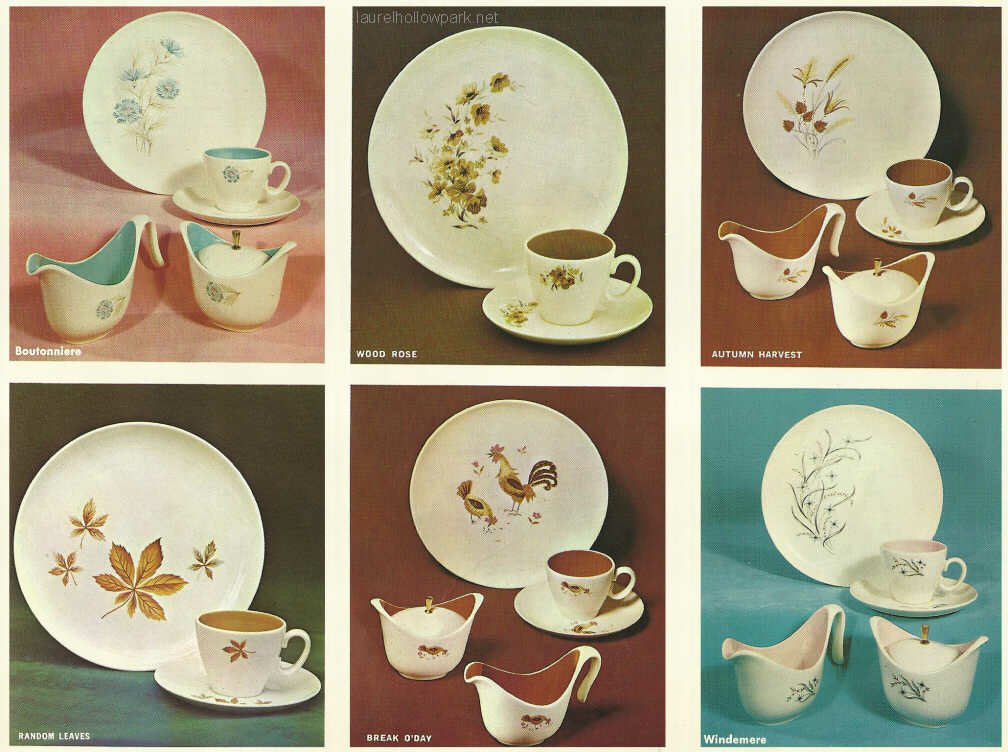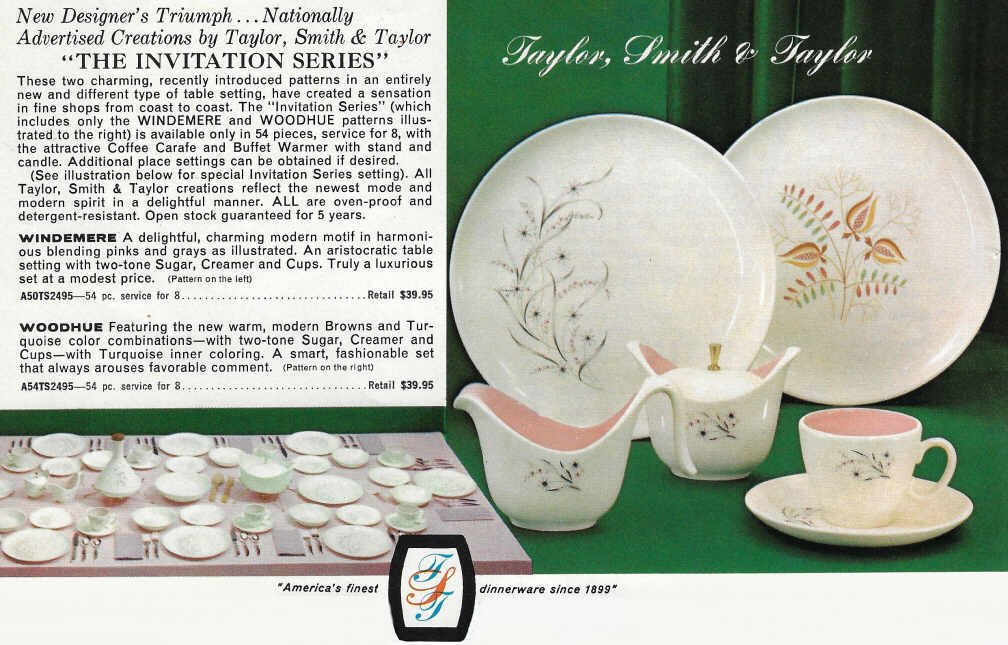A friend gifted us a beautiful set of stoneware tableware from the early sixties it’s going to become our daily use. It is “Boutonniere” from Ever Yours by the Taylor, Smith & Taylor Co. stoneware dinnerware.
Taylor Smith & Taylor
Ever Yours
Boutonniere.
Ever Yours by the Taylor, Smith & Taylor Co.
The following article comes from a March 24, 1958 edition of East Liverpool, Ohio’s newspaper, The Evening Review and discusses the newly released Ever Yours shape and its intial treatments:
TST Unveils New Line of Dinnerware
“Ever Yours,” a new family of heirloom-quality dinnerware, has been announced by W. L. Smith III, sales manager of the Taylor, Smith & Taylor Co.
The interlacing motifs of “Ever Yours” reflect the influence of John Gilkes, TST design director.
Made by an exclusive process, TST said which produced brilliantly clear, lasting colors and strong, ovenproof bodies. “Ever Yours” features a zirconhard glaze that resists the deleterious action of detergents and harsh cleaners.
“Ever Yours” is available in four distinctive patterns. “Summertime” is an airily spaced floral in muted blue and green tones; “Quince” features heavy blossomed sprigs in sunflower-yellow and leaf-green; “Arabesque.” an authentic reproduction of an Arabian window mosaic in Arabic traditional geometric form, turns to harmonizing browns for color accents, and “Ivy Twine” is a floral symphony of charcoal and dusty rose. All the characteristic styling is set against a rich, ivory-white background.
A 16-piece starter set retails at $6.95, while a 54-piece service for eight retails at $18.95.
http://www.laurelhollowpark.net/tst/everyours.html
Now I’m on the hunt for the entire Boutonniere Taylorstone set, i need Coffee and Casserole top of list.
Early History of Taylor, Smith & Taylor Co.
The following article was written by Lucille T. Cox and ran in several pottery trade publications in 1938. It describes the beginnings of the Taylor, Smith & Taylor Co. which closed in 1981. Photos shown did not appear with the original article. The first is the old TS&T logo used after the reorginization of 1901. The second photo shows the “Belva” shape introduced in 1926.The story of the Taylor, Smith & Taylor Company is the story of two brothers, William L. and Charles A Smith, the village of Chester, West Virginia and the suspension bridge connecting the pottery town of East Liverpool, Ohio with Chester. It is impossible to separate one from the other.The two brothers were originally from Wellsville, Ohio, and came to East Liverpool early in their lives. William L. Smith became the owner of a large lumber yard, a member of the Chester Land Company and the East Liverpool Bridge Company.In 1895 the town of Chester was laid out and work was started on the suspension bridge to be built across the Ohio river. The bridge was opened to the public on January of 1897 and immediately industrial enterprises became interested in obtaining sites in the new town. A rolling mill was built in Chester, to be followed by the erection of the Edwin M. Knowles China company and several smaller plants.The Smith brothers believed there was room, competitively speaking, for another pottery in the new village. They interested a number of potters and influential men from East Liverpool in the proposition and accordingly on October 10, the first meeting was held in the office of that famous pottery, the Knowles, Taylor & Knowles company, the purpose was to draw plans for the incorporation of a new pottery firm.The Tribune, the local newspaper of East Liverpool, published an account of this meeting and subsequent meetings in their issue of October 26, 1899:New South Side Pottery“The articles of incorporation for the new south side pottery has been filed with the Secretary of State at Columbus, Ohio. The incorporators are Colonel John N. Taylor, C. A. Smith, Joseph G. Lee, Albert G. Mason and William L. Smith. The firm will be known as the Taylor, Lee & Smith Company. It is expected the plant will begin operations about the first of next April.”What a series of historical recollections the name of Colonel John N. Taylor calls forth. While he did not play a dominant part in the life of the Taylor, Smith & Taylor company, he was certainly one of the most colorful men of the potteries. A personal friend of President William McKinley, a partner in the Knowles, Taylor & Knowles Company then the world’s largest pottery and one of the leaders in the pottery industry.On November 8, 1899 the company elected their first executive staff, Charles A. Smith, president, Joseph G. Lee (of the Knowles, Taylor & Knowles Company) vice president, A. G. Mason secretary, Homer J. Taylor, treasurer, and William L. Taylor, general manager. The two last officers were sons of Colonel Taylor.It was, however, many months before the Taylor, Lee & Smith pottery company was ready to begin operations. The contract for the building was given in December of 1899 to a local firm and the immensity of the specifications amazed the townspeople. It was the largest contact of its kind to be awarded to any contractor in the vicinity. On the 25th of January, 1900, work was begun on the new pottery. The Tribune faithfully recorded the progress of erection. On June 21 of that year the eight kilns of Taylor, Lee & Smith Pottery were completed and on the fifth of July the artesian well had been successfully bored and piped. The 13th of September the slip house started operation and the first clay was made.During the fall months the warehouses were stocked with ware but none was shipped until January, 1901. The products of the pottery were of excellent quality and everything was favorable for continued success. It possessed every device known to the pottery trade and had one of the most modern plants in the industry.However, in September of 1901 Joseph G. Lee withdrew from the firm and the company passed a resolution to change the name. The resolution was adopted September 17, 1901 and the name of Taylor, Lee & Smith Pottery Company passed into the limbo of forgotten pottery names. The present firm name of Taylor, Smith & Taylor Company, Potters, was assumed. The members being Colonel John N. Taylor, C.A. Smith, Homer Taylor and William L. Taylor.For several years the firm endeavored to keep production in force but misfortune dogged their plans and in 1905 the plant practically ceased operations. The Taylor brothers, Homer and William, withdrew from the partnership. William L. Smith and his brother Charles then stepped into the breach with additional capital and on July 17th, 1906 a reorganization was affected and the new executive staff was now composed of the following men: W. L. Smith, president, C. A. Smith, vice president and treasurer, C. C. Davidson, secretary, Colonel Will A. Rhoades, sales manager and W. H. Griggs, superintendent.In 1908 Colonel Rhoades resigned and William Lynch was elected to the position of vice president and sales manager, a position he retained until July, 1928.The years following the reorganization have been ones marked by continuos operations. A number of fires have occurred in the plant but none serious enough to halt production. The pottery of Taylor, Smith & Taylor does not have the historical background of the older potteries as it was started after the beginning of the Twentieth century, but it has its share of interest. The fascination of the modern pottery lies in its research department and the skilled workmanship of its trained employees. The Taylor, Smith & Taylor pottery was conceived after the eradication of the slip kiln, horse ring, thrower and all the accoutrements of the pioneer potteries and they have been replaced with mechanical devices unknown to the pottery of fifty years ago. Devices which tell the story of the modern pottery and that story is as captivating and intriguing as the accounts of earliest potteries.The Taylor, Smith & Taylor Company, Potters, have advanced steadily in the thirty-eight years of its existence and is today among the finest of American potteries. The present officers include: Richard B. Smith, president, Ralph K. Smith, first vice president, Bryce Palmer, second vice president in charge of sales, C. D. Davidson, secretary, W. T. Marfield, treasurer, M. J. Lynch, general manger.© 2009-2017
